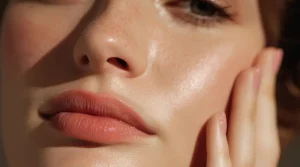Laser resurfacing is a treatment to reduce facial wrinkles and skin irregularities, such as blemishes or acne scars. It directs short, concentrated pulsating beams of light at irregular skin, precisely removing skin layer by layer. Typically, people undergo laser resurfacing if they have fine lines, wrinkles around the eyes, mouth or forehead, shallow scars from acne, or their skin isn’t responsive after a facelift.
Since it is a medical procedure, it’s important to follow the doctor’s orders and take care of your skin in the days and weeks following. Here are some tips for taking great care of your skin in the time following a laser procedure.
What To Expect Following Laser Resurfacing
Immediately after the procedure, your doctor will bandage the area up. In the day after your procedure until four to five days after, you will need to clean the treated area, then apply ointment to prevent scabs from forming. It takes 10 to 21 days for the area to heal.
Swelling
Since it’s normal to experience swelling after a resurfacing, your doctor may prescribe steroids to help you manage the swelling around your eyes. One tip to help with this is to elevate your head by sleeping on an extra pillow. You can also use an ice pack to help reduce swelling.
Itchiness
Your skin might start feeling itchy or start stinging in the day or few after the procedure, and up to one week afterward, your skin will start to dry and peel off. Once the skin heals, you can wear oil-free makeup to minimize redness—which usually fades in two to three months.
Wear Sunscreen
Your skin might become lighter for a while afterward, so it is particularly important that you use a “broad-spectrum” sunscreen. This screens ultraviolet B and ultraviolet A rays, to protect your skin during that time. When you’re choosing sunscreen, look for one with an SPF of at least 30 that is specifically formulated for the face with a physical blocker, such as zinc oxide.
Limit Time In The Sun
As well, try to limit the amount of time you spend in the sun, especially when the sun is the brightest between 10 a.m. and 2 p.m. This is a great time to bring out that hat you bought for a vacation a few years back, and never got to wearing again.
Moisturize Your Skin
It is also important to keep your skin well moisturized. If you use Retin A or glycolic acid products, you should be able to start using them again about six weeks after the procedure or when the doctor says you can.
Once the treated areas have healed, you can wear makeup to hide the pink to red color that is typically seen after laser skin resurfacing. Green-based make-ups are particularly suitable for this camouflage since they neutralize the red color. Oil-free make-ups are recommended after laser resurfacing. The redness in the laser-treated sites generally fades in two to three months. But it may take as long as six months for the redness to completely disappear. Redness generally lasts longer in people with fair skin.
Skin Sensitivity
Skin that has been “lasered” is sensitive, easily irritated and compromised. Washing the skin with cleansers that are harsh and stripping, like those that are acid-based or exfoliating, can actually damage your skin. You’ll want to keep your skin as clean as possible, which may mean limiting makeup (ask your doctor when you can start wearing makeup again and which formulas are best for you) and the use of your regular skincare products, especially those with ingredients like acids and retinoids.
If your skin is red and swollen after you’ve been treated, make sure to apply cold compresses and ice packs to the area, as this will help mitigate some of the inflammation. Sleeping in an elevated position with an extra pillow or two can help, too.





